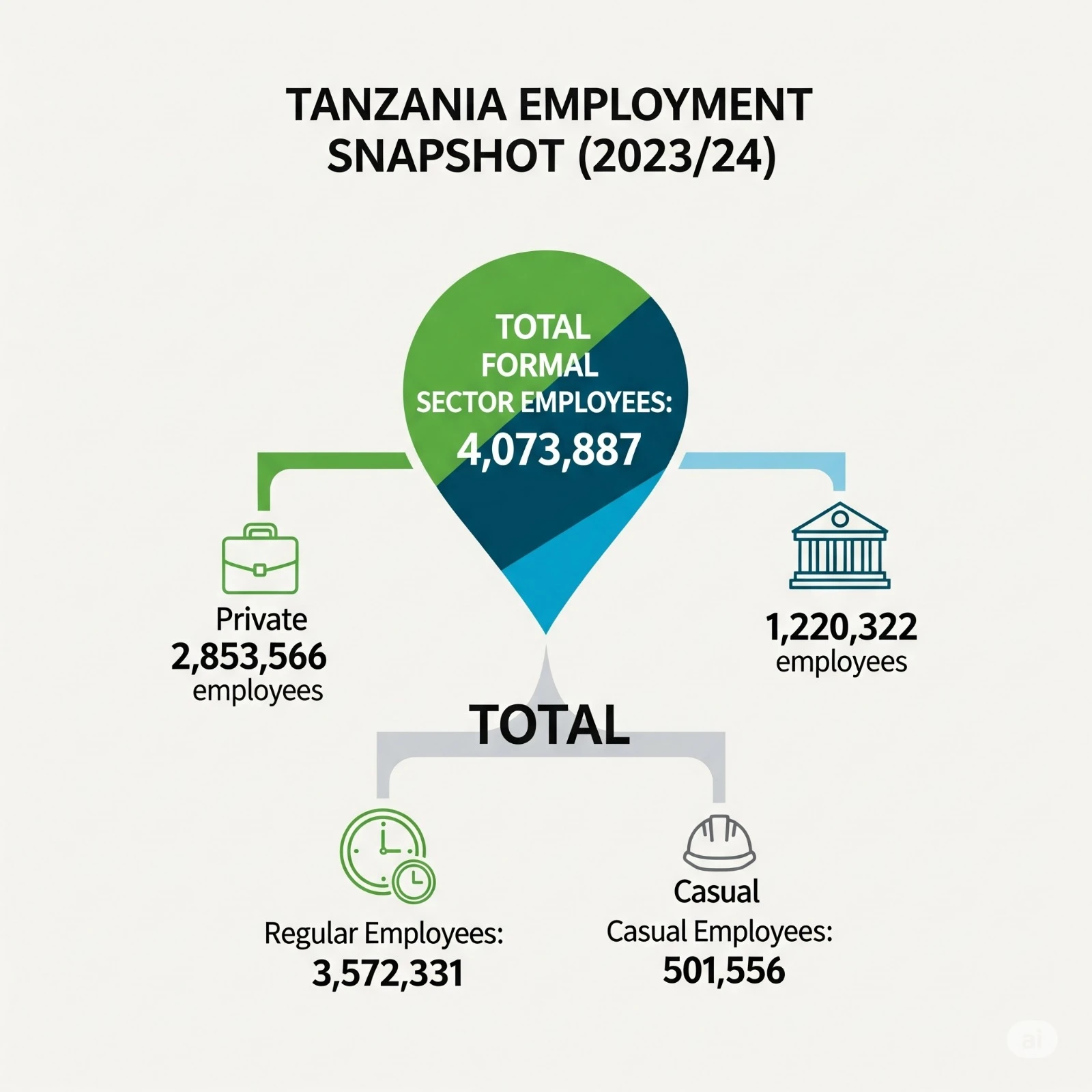Annual formal employees cash earnings hit 36trn/-

Total annual cash earnings of employees in Tanzania reached 36.6trn/- in the 2023/24 financial year, with the education, public administration and defense, compulsory social security, and manufacturing sectors accounting for the largest shares.
According to the latest Tanzania formal sector Employment and Earnings Survey 2022/2023 released by the National Bureau of Statistics (NBS), the total annual wage bill for employees in the public and private sectors stood at 37.02trn/- in 2023/24.
Of this, the private sector accounted for the larger portion, spending 21.08trn/- compared to the public sector's 15.93trn/-.
The report shows that the education sector received the highest share of the wage bill (22.2 percent), followed by public administration and defense, and compulsory social security (16.5 percent), while manufacturing contributed 8.5 percent. In contrast, the real estate sector recorded the lowest wage bill share (0.3 percent), followed by arts, entertainment, and recreation (0.6 percent).
Regionally, Dar es Salaam had the highest share of the annual wage bill in Mainland Tanzania at 31.9 percent, followed by Morogoro (7.2 percent) and Arusha (5.2 percent).
Katavi had the lowest share at 0.7 percent. In Zanzibar, Mjini Magharibi led with a 62.0 percent share, while Kaskazini Pemba recorded the lowest at 2.1 percent. The survey notes that regions with higher wage bills generally reflect higher levels of employment.
The formal sector currently employs 4,073,887 people — 3,990,457 in Mainland Tanzania and 83,430 in Zanzibar. The private sector remains the dominant employer with 2,853,566 employees, compared to 1,220,322 in the public sector. The total includes 3,572,331 regular employees and 501,556 casual workers.
The manufacturing sector has the largest share of total employment (17.7 percent), followed by education (15.9 percent), and public administration, defense, and compulsory social security (11.9 percent).
Youth dominate the regular employment category, making up 61.0 percent of regular employees, compared to 39.0 percent for adults.
The report also highlights employment among people with disabilities. Out of 3.57 million regular employees, 19,541 are persons with disabilities (12,295 men and 7,245 women). Of these, 67.5 percent are employed in the public sector, and 32.5 percent in the private sector.
Dar es Salaam again tops in terms of proportion of total employees in the formal sector (33.7 percent), followed by Morogoro (7.3 percent) and Arusha (5.6 percent).
In terms of wages, the survey reveals that 42.5 percent of regular employees with permanent contracts earn monthly wages above 700,000/-. This proportion is significantly higher in the public sector (60.6 percent) than in the private sector (24.9 percent).
Employees in professional, scientific, and technical activities have the highest proportion earning over 700,000/- monthly (71.8 percent), followed by those in financial and insurance services (69.5 percent).
The overall average monthly cash earnings in the formal sector stood at TZS 609,354. Public sector employees earned almost double that of their private-sector counterparts, with average monthly earnings of 1,273,395/- versus 549,373/-.
There was no significant gender disparity in average earnings between male and female employees.
Among public institutions, employees in central and local governments, as well as parastatals, earned similar average monthly wages — slightly above one million shillings. Within the private sector, employees of nonprofit institutions earned the highest average (606,989/-), while those in cooperatives earned the least (482,527/-).
By industry, financial and insurance activities offered the highest average monthly earnings (1,346,772/-), followed by public administration, defense, and social security (1,228,899/-). Employees in accommodation and food services received the lowest average monthly earnings.
Top Headlines
© 2025 IPPMEDIA.COM. ALL RIGHTS RESERVED

























